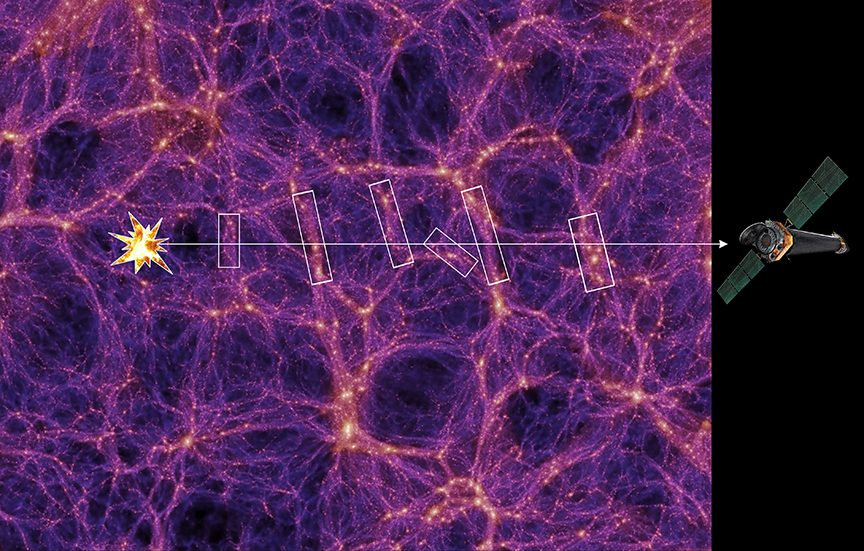Where is the universe hiding its missing mass?
Black makes a person look thin, people like to say. The universe apparently knows this trick too. In any case, it looks significantly skinnier to astronomers than they think it is in reality. Scientists think this because they can calculate how much matter was originally released by the big bang (this refers only to normal matter, not dark matter). If we add up everything that we can see in the sky today, however, we only get to two-thirds of this original amount.
Where is the universe hiding the other third? This “Missing Baryon Problem” is an important question, because it provides insight into the universe’s structure. And before we go off searching for dark matter, shouldn’t we at least have a complete inventory of normal matter?
There are some hot candidates, in the literal sense, for the missing baryons: they might be spread out in gigantic filaments made from warm gas (up to 100,000 K) and hot gas (over 100,000 K) between the galaxies. Astronomers have named these structures “warm-hot intergalactic medium” or WHIM. These strands of matter that permeate the universe are not visible to optical telescopes.
They can be seen in the ultraviolet range, but they haven’t been able to be definitively weighed yet. To do this, a trick is needed, which astronomers have now applied to data from the space telescope Chandra that was specially designed for the X-ray range. They examined X-ray radiation from the very bright quasar H1821+643 at a distance of 3.5-billion light-years from Earth. According to the astronomers’ hypothesis, when this light passes through filaments of WHIM (on its path to Earth it passes through a total of 17 filaments), the filaments must act on the X-ray light by absorbing part of its spectrum. And in fact: the astronomers found an absorption line of oxygen that must have come from a hot gas at a million degrees Kelvin. The density of the gas can be determined from the amount of attenuation. Projected onto all elements, this produces a density that corresponds to the missing third of normal matter.
